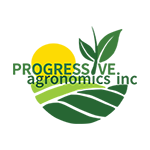Digital technology is changing the face of agriculture, giving us more information at a faster pace and with greater precision than ever before. With advanced analytics and modeling, farmers use information to help them make more informed decisions. Increasing nitrogen use efficiency (NUE) has been, and continues to be, a high priority for many stakeholders. For farmers, any gain we can make in NUE provides environmental benefits as well as increased return on investment (ROI).
Pre-plant nitrogen (N) applications may be less stressful and more efficient in terms of balancing workload. Still, applying all of your N upfront is not the most efficient strategy when it comes to NUE and ROI. Since corn plants use 75% of N after the V10 growth stage, having more N in the field than can be used by the crop equals inefficiency. This fact is the foundation of the need for fast, accurate, and inexpensive technologies that can measure nitrogen inseason. These types of technologies will help bring us closer to meeting the 4Rs of nutrient stewardship: right source, right rate, right time, and right place.
Whether you are beginning your journey or you are already invested, here are a few options that can help you dial in your N rate and timing.
Pre-Sidedress Soil Nitrate Test (PSNT) or Late Spring Soil Nitrate Test (LSNT):
- Collect soil samples to a depth of 12 in. when corn plants are 6 to 12 in. tall
- Take one sample for up to 10 acres if field/fertility is uniform (less uniformity requires more samples per acre)
- Send to a lab that performs PSNT or LSNT (Iowa State University, Michigan State University, etc.)
- Lab generates a report and sends it to you
Crop Health Imagery (Greenseeker, Aerial Imagery):
- Access a device capable of measuring crop health
- These devices do not directly measure N, but measure light reflected off the leaves that correlates to chlorophyll concentration and crop health
- Capable of covering many acres in a short time
- Nearly instantaneous results
- Accuracy is dependent on establishing high-nitrogen reference areas for calibration
Teralytic’s Wireless Soil Probe
- Order probe and subscribe to service that analyzes and presents your data
- Install the 1 meter long probe in your field (10-50 acres per probe depending on uniformity)
- 26 total sensors measure at depths of 6 in., 18 in, and 36 in. as well as above ground
- It also measures nine variable (three of which are NPK) and transmits every 15 minutes
- Mount a wireless gateway at least 30 ft. high within range of the probe
- Data is sent wirelessly to the secure, cloud-based server for analysis
- Real-time reports are generated and presented on a customized dashboard (Terascore)
One promising fit for in-season N measurement technologies is with farmers who apply manure to their fields. That manure is valuable, but relying on it to provide a specific amount of N for each acre can be precarious. Why not take stock of your N and then dial in the rate and timing of a sidedress application?
~ Greg Shepherd, M.S., CCA – Field Agronomist

